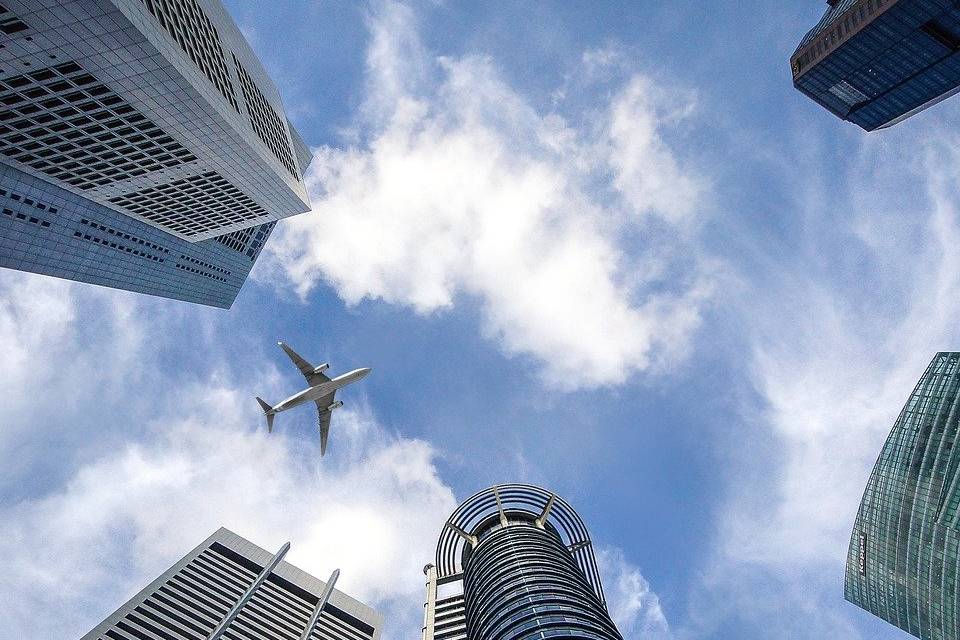While the UK’s full lockdown proved to be a difficult time for businesses and individuals alike, there were some silver linings. One of which was the drastic reduction in CO2 emissions. The National Geographic reported that lockdown resulted in “one of the largest, most dramatic drops in CO2 emissions ever recorded.”
Unfortunately, it wasn’t all positive news for the environment. The concentration of carbon dioxide in the atmosphere hit its highest levels in human history, rising to 418 parts per million.
This has put environmental issues and our carbon footprint back into the spotlight. Businesses, particularly, have started to take stock of their impact on the environment. The BBC reported that aviation contributes to roughly 2% of the world’s carbon emissions.
And passenger numbers are predicted to double to 8.2 billion in 2037. In 2018, there were eight million business trips taken from the UK. Taking a long haul flight generates more carbon emissions than the average person does in a year. With other sectors of the economy working towards a greener way of life, aviation’s negative contribution is set to rise.
The reduction in carbon dioxide emissions was a result of the reduced number of people travelling to work or on business trips. So here, we’ll take a look at the ways you can keep your business travel eco-friendly.
1. Embrace remote working
Businesses with office bases had to switch to a remote working model at the beginning of the pandemic. Many are now returning to home working due to newer restrictions. Thanks to modern digital platforms, employees have been able to collaborate with their colleagues while at home. The pandemic has put these remote working platforms to the test, with offices split and a vast majority of workers working from home. Microsoft Teams, Zoom, and Skype for Business have been on the forefront of remote working.
As well as facilitating collaboration between remote-based colleagues, these tools are also increasing productivity and contributing to a lessened carbon footprint. Large amounts of time and money can be saved by choosing to switch to virtual meetings rather than flying for several hours across the world. Employees can maintain relationships with clients or colleagues without being in the same room.
2. Consider greener ways to travel
Sometimes, business travel is unavoidable. In these instances, you should consider a mode of transport which is efficient and green. For example, do you need to fly? If it’s possible to take a train or bus instead of a plane, you should consider it. Electrified rail travel releases around seven times fewer emissions than a plane does on the same route. Although this might not be feasible for trips abroad, it’s more efficient and sustainable than regional or national flights. Ecopassenger is a handy tool to compare the energy consumption and CO2emissions of different modes of transport.
One of the easiest ways you can make your business journeys eco-friendly is to switch from plane travel to train. Travelling by train almost always comes out eco-friendlier than a plane. For example, a journey from London to Edinburgh on a plane would release 144kg of CO2 per passenger. The same journey on a train would contribute just 29kg per person. Although the journey will take longer, your employees can be productive while travelling by using collaboration tools and cloud software.
3. If flying, travel economy class
A surprising way you can cut your carbon footprint if you have to travel by air is by choosing economy over business class. According to the Department for Business, Energy, and Industrial Strategy (BEIS), carbon emissions are 3x higher per passenger per kilometre travelled for business class and 4x higher for first class. This is because there’s more space per seat, with each person accounting for a larger amount of the pollution of the plane.
4. Take direct flights
Aeroplanes use the highest amounts of fuel at take-off and landing. That’s true even when considering fluctuating factors like passenger numbers and wind. On a four-hour flight, the surge of engine power used to elevate the plane to the appropriate cruising altitude can account for 10-20% percent of total fuel consumption. That’s why direct flights are more efficient, although more expensive, because you’re only taking off once rather than twice or more.
5. Pack only what you need
The weight of the plane impacts the amount of fuel required to power it. That means if you have to travel by plane, you should pack as light as possible. Although it’s unlikely that you’ll be packing a 138-litre suitcase for a several day business trip, be sensible with what you take with you. An added benefit of this is, for travelling abroad, you can reduce luggage costs.
6. Pick an eco-friendly airline
Although planes are, by their nature, not good for the environment, some airlines are greener than others. That means you can minimise your carbon footprint when flying. Some companies are making effort to improve their fuel consumption and efficiency to meet industry targets.
Airlines can make their operations eco-friendlier in many ways. Some make their fleets greener when upgrading them by adding winglets to reduce drag and fuel consumption. Other airlines use environmentally friendly fuel sources like LNG, which reduces toxic emissions. You can also carry out extra research by finding out which aircraft you’ll be flying on and which models are more fuel efficient.
Find out exactly how much CO2 your flight will contribute to the atmosphere by using a tool like Matrix Airfare Search. This software allows you to compare similar airlines and routes to find the most eco-friendly journey for you.
7. Choose airlines that offset their carbon footprint
As well as considering airlines dedicated to making their operations green, you can also choose companies which take actions to offset their carbon footprint. The rise of ‘flygskam’ (Swedish for ‘flight shame’) has put pressure on airlines to offset the carbon emissions of their flights. This involves calculating the emissions of a journey then purchasing carbon credits from projects which focus on preventing or removing that amount of carbon emissions somewhere else. For example, many carbon-offsetting programmes include planting trees to help absorb carbon dioxide from the atmosphere.
Because flying is so fuel-intensive, the bulk of your carbon footprint will likely be attributed to the flights you take. This in turn will be higher for those who go on a lot of business trips. Consider these steps to work towards achieving a greener and healthier society.












